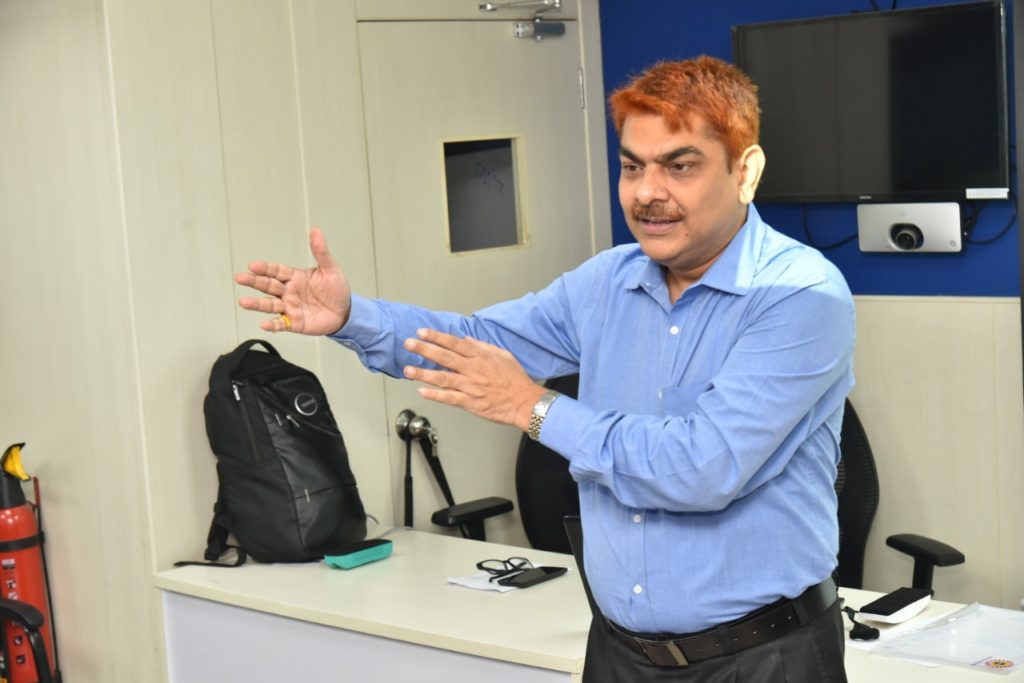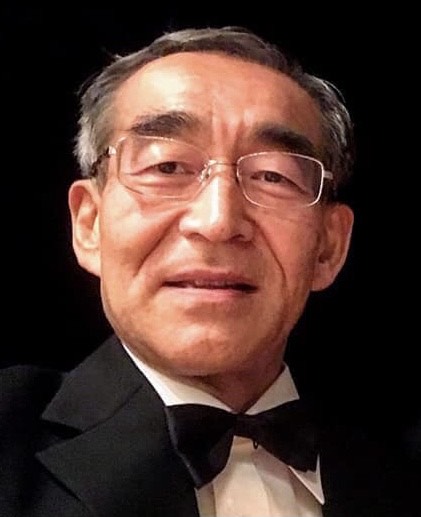Watch this video that has the audio-medial translation of some of the bhavas of the rasa theory.
This presentation deals with the Rasa theory and its application to various translations of Shakuntala (the epitome of beauty) one of the most representative classics of Indian literature and Hindu culture. The presentation deals with the translation of Sanskrit into English. At the end of the presentation, the author questions the genuineness of western translation theories as they fail to address the experiential aspects of literature as per the rasa theory.
The Rasa theory is built around the concept of bhava which is subdivided into vibhava, sthayibhava, sancaribhava, anubhava and sattvikabhava. Rasa is the first of the eleven elements in literary representation and it is first or primary because : (1) it is rasa that renders all the elements (vibhava, etc.) sarthaka, meaningful and illumines the meanings of kavya; (2) in the absence of rasa, the purpose of the composition in the form of knowledge (of what to be involved in, from what to withdraw) is not fulfilled; and (3) it is rasa that creates ananda in the viewer/participant/reader. Bhava is that which brings about a condition or which gets established (though what happens). Derived from (abhu), bhava means an instrument of being. It may be broadly translated as states of mind or emotional conditions or even emotional consequences of experience. Bhava in amarkosha appears as a synonym of vidvan, and therefore incorporates in its denotation a notion of learning or what is learned.
Bharata enumerates forty-nine bhavas – it is a claim about the range of human experience. Eight/nine of these are sthayi, relatively stable-stable because (1) springing from stronger causes, they tend to endure longer, (2) almost everyone experiences them, and (3) they are more frequent, are experienced again and again. They are more powerful, more basic. Compare grief, soka, for example, with dainya which may spring from more superficial causes. These conditions/states become manifest in someone (asrayalambana) and are due to someone or a thing (visayalambana) and are to some extent determined by the circumstances of the event (uddipana). Once a condition of being appears, the person begins to overtly behave in the given ways(anubhava). But we are always richly afflicted-there is never one single emotion or condition. What is more likely is that there is a dominant bhava in the midst of a number of ancillary emotions-the sancaribhavas. This complex mental condition is correlated with certain forms of physical demeanour and behaviour in life, abhinaya. The dominant bhava produces some inevitable physical effects, for example, fear leads to horripilation. All these – sattvikabhavas, vibhavas, vyabhicaris(sancaribhavas), anubhavas and other visible manifestations(abhinaya)-when co-present together suggest/outline/evoke the sthayibhava. In life the hearer/viewer of the sthayibhava, given the empathy, experiences the concomitant rasa through the attachment of his mind to the sthayibhava. When all this complex event is enacted in a text or on stage, the reader/viewer similarly experiences rasa, depending upon his empathy and the success of representation/ enactment.
This can be visualized directly with reference to Karuna Rasa , Compassion which takes form in the heart of those ( participant – viewers) who experience feel the soka, grief, as manifest in an experience/performer (anukarta, nata). A number of vibhavas, such as the death of a loved one, loss or misfortune, are the source of grief which is more or less intense according to the visaya, asraya and uddipana of the vibhava-a young son (than an infant), an old father, the only child, etc. Once it appears in the heart, the grief deepens through other bhavas, for example, smrti and/or nirveda. And this sthayibhava takes different visible, physical forms depending on the prakrti (uttama-madhyama-nimna or sattvika, rajas, tamas) of the karta (agent/experiencer). This abhinaya (which includes anubhavas and sattvikabhavas) is the indicator of the sthayibhava. An observer experiences the grief of the sufferer which is transmuted into karuna rasa in him.
Although there are different theories available on the total number of rasas, a widely accepted theory is that of Abhinavagupta in which he states that there are nine rasas in all which are accepted on the categorical ground that there are only nine sthayibhavas : because man is born endowed with only these many. According to the metarule hater of sorrow (dukha) and immersed in the relish (asvadana) of pleasure (sukha), everyone
(1) intrinsically seeks pleasure [this indicates rati](2) laughs at others [this indicates hasa](3) suffers on being separated from the loved ones [this indicates soka](4) on account of that separation gets angry [this indicates krodha](5) on account of helplessness is afraid [this indicates bhaya](6) yearns to acquire or achieve something [this indicates utsaha](7) is full of dislike for improper things [this indicates jugupsa](8) is surprised at unexpected deeds of self and others [this indicates vismaya](9) has the urge to give up/renounce [this indicates nirveda]…. no human being is born without this cittavrttis (tendencies of the thinking/feeling self), the only difference is that some have more of one and some have less. In some people, these tendencies relate to proper objects, in others, to the opposite.
Rasa theory is one of the oldest theories of Indian literature. Its sources lie in the Vedas. According to Madhusudansastri, the Rasa school has clearly emerged in the Vedic period: the word rasa was used to designate the special delight which an audience experienced in the course of watching a dramatic performance characterized by good art. Bharatamuni himself has indicated that he drew rasa as an element of drama from Atharveda: rasanatharvanadapi. The Natyasastra of Bharatamuni contains the first major statement on rasa. Manmohan Ghosh has argued that his great work was composed in the 5th century BC. If that is so, the rasa theory must have been in existence a long time before 500 BC because Bharatamuni himself has cited many traditional verses coming down from generations.
The term rasa has been variously translated into English. Coomaraswamy prefers to call it ‘flavor’, but Manmohan Ghosh uses the word ‘sentiment’. K.Krishnamoorthy also employs the same word. Ganganatha Jha has translated it as ‘passion’. Perhaps the best solution is not to translate it at all. But if we must, it would be better to call it ‘aesthetic mood’, or for short, ‘mood’.
Whereas feelings and emotions, when aroused by linguistic means, are conditioned responses, moods are not, and this is also a fundamental aspect of rasa; rasa is based on conditioned responses, but in itself is something higher: we may call it unconditional or cultivated response. As regards its nature, the best analogy remains that of Bharatamuni who explains that the unique taste delicacy arises from coming together of many ingredients each of which has its particular taste like a conditioned response, but the taste of the dish is different and of a higher order than that of each component. The analogy with cooking, which involves providing heat as well as expertise suggests, in addition to bhavas, poetic inspiration, and poetic art.
The Rasa theory can be best understood from the explanations of Kapil Kapoor, Professor of English in Jawaharlal Nehru University, who in his book “ Literary theory – Indian conceptual framework ” has described in detail various concepts related to Indian literature, its tradition, and various theories and school of thoughts. He describes the literary experience as an object of knowledge.
Aesthetics identifies the effect of art, its enjoyment, and seeks to explain or account for the ground of this enjoyment. What gives enjoyment to the audience has been designated by the word beauty, the element of beauty, in art. While referring to the contents of the beauty Kapoor says that the answers differ from one culture to another and produce differences in the aesthetics of communities. The answers depend on the purposes of art in society apart from the philosophy and the world-view of a community.
Thus, for example, in the western world-view, there has been a trend to extolling reason at the expense of emotion, and this in spite of Aristotle’s defense of emotions/feelings which according to Plato constitute the lower part of the soul. But in Indian thought, there has never been any doubt that the emotional content or aspect of Atma has an intrinsic value, that at least some emotions have an element of beauty and that emotions soften the harsher instincts of man. So in Indian literature, the states of mind, emotional states, bhavas, constitute the core aesthetic experience-art creates and communicates these states of mind, these dominant emotional states, and the reader/viewer/audience experiences these states of mind. If the art/literary composition succeeds in giving enjoyment by evoking some state(s) of mind, then the work is aesthetically satisfactory.
Beauty, in fact, is secondary-the evocation and communication of a state of mind is judged successful if it moves the reader/hearer and affects him deeply, in which case the work of art is beautiful. And what moves the people is, affects them deeply, is determined by their worldview, their philosophy of life Cultural differences of various communities show in their respective aesthetics, in the kind of emotional/intellectual content that is claimed to have more beauty, i.e greater capacity, to move or affect the audience. Hence in Indian aesthetics, this emotion is compassion (karuna), the selflessness of the human heart.
He further explains the difference between aesthetics and rhetoric – aesthetics concerns the content of the literary experience, the aesthetic experience, while rhetoric deals with the modes of representing that experience. Rhetoric identifies and analyses the specific means employed to achieve aesthetic goals. In Indian aesthetics, selflessness is beauty-human goodness, not necessarily ethical rightness, but the goodness of feeling and instincts.
Turning to the structure of literary experience, rasa – bhava, once again Kapil Kapoor takes us to Kavya which because of its nature of knowledge imbued with rasa has been the subject of much discussion and that gives pleasure. The role or place of kavya in the Indian cultural community has been essentially one of delight-ananda. But ananda does not mean “laughter” or gross pleasure-for ananda arises from a narrative deep grief as well. It is that entertainment, delight, or pleasure which comes from acquiring a certain kind of knowledge of human experience. This knowledge is not the one in the sense that we teach or learn about the human experience. We acquire an (emotional) understanding of life which comes to us through impressions or sansakaras that the experiences codified in a literary text leave on our self, or as some theorists say, that reconstitute our self-we recreate those states of mind in ourselves and the: knowledge” of a text in us is the knowledge of the emotional essence of the experience.
For making us understand this concept Kapil Kapoor gives an example of the story Grief- of Chekov-of the old cab driver who is so happy that his son has now become young and has started driving the cab, and he in his old age can sit back and rest-he does not have to work. But only a few days pass and the son dies and the old cab driver is back in his cab, on the road. And at that point, the story begins. He is shown sitting immobile in his cab-with the Moscow snow around and on him, enveloped by the evening light and the oncoming darkness-meditating on his grief. Now this “immobility” is the anubhava, a kind of physical response to his grief. Other cab drivers are calling out to likely passengers but he is sitting immobile. He wants to share his grief-so many passengers hire his cab-he tries to tell his story. Nobody listens, no one has time for his, the other person’s grief. Finally, he unburdens himself, tells his story, to his horse. Now if we read that story or hear that story, and if we don’t feel deep compassion for the old man, we cannot say that we have understood the story, i.e., grasped its meaning.
Hence experience in literary composition, therefore, is a rasa- bhava structure – a structure of states of being. The argument is that Being is a configuration of sanskaras (traces/impressions) left by events involving necessarily persons) in the form of ‘emotional conditions /responses’. This theory of art experience rests on a non-opposition between ‘emotion’ and ‘reason’, between the feeling self and reasoning self. So, when we look into the analogue in the other traditions we have to remember that ‘emotion’ is not an adequate equivalent of bhava, bhava means that which brings about being or existence, and also the ultimate meaning. Secondly, bhava is not in opposition to intellection but a stage in total intellection. Also, the rasa theory is more than a theory of aesthetics – it is a structural analysis of the totality of human experience and behavior, and is based on a particular conception of experience, being knowledge, and cognitive mechanism.
1,955 total views, 2 views today


